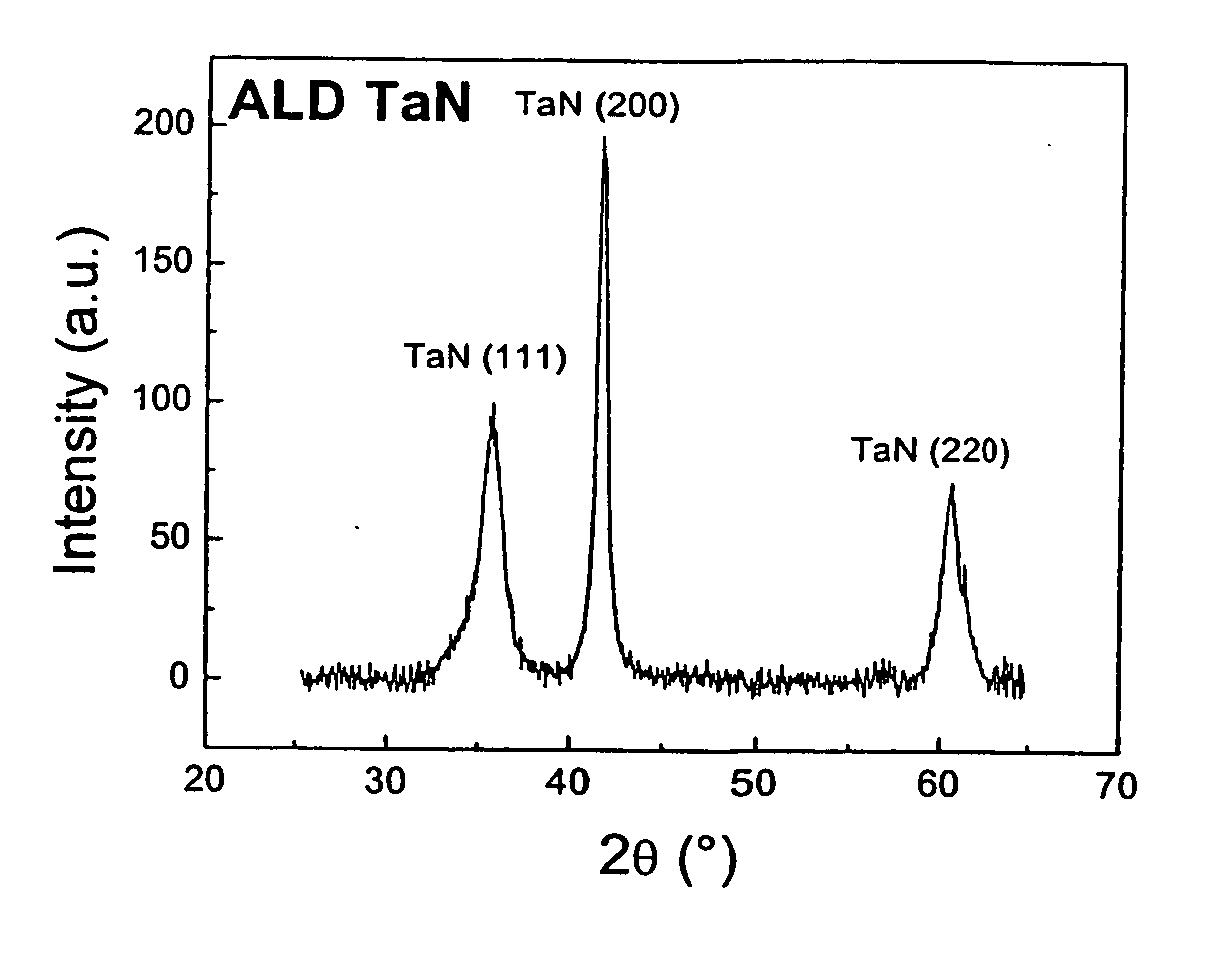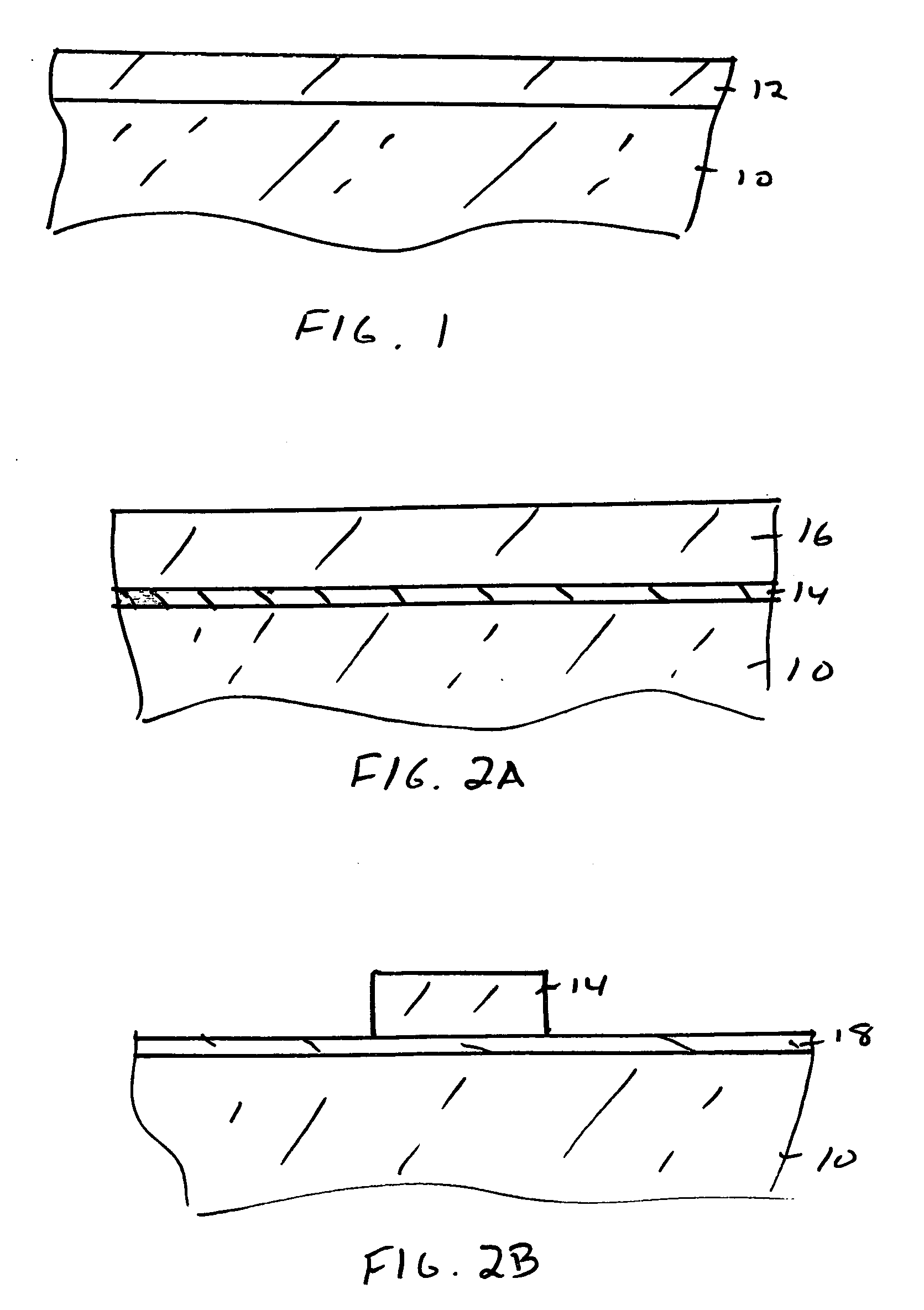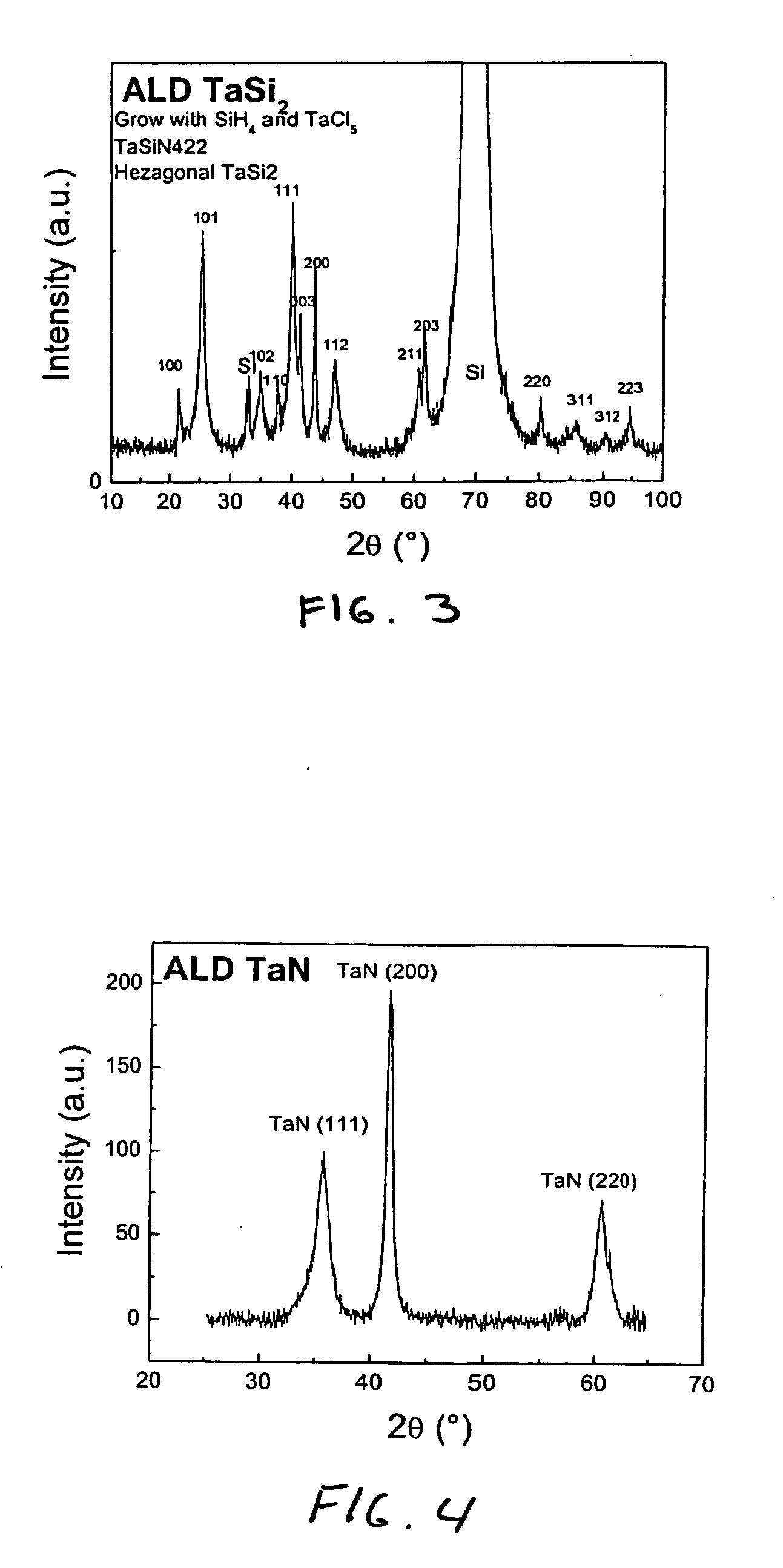Atomic layer deposition of metallic contacts, gates and diffusion barriers
- Summary
- Abstract
- Description
- Claims
- Application Information
AI Technical Summary
Benefits of technology
Problems solved by technology
Method used
Image
Examples
example 1
[0068] Atomic Layer Deposition of TaSi2
[0069] For this experiment, an atomic layer deposition chamber was used. Samples sizes as large as 200 nm diameter could be loaded with the atomic layer deposition chamber. After the sample was loaded, the chamber was pumped by a reactive gas turbo molecular pump with a working base pressure of 10−6 Torr. The sample heating was performed using a ceramic resistive heating plate, providing growth temperatures up to 450° C. The temperature was controlled by varying current to the heater, which was previously calibrated against a thermocouple attached to a sample.
[0070] Solid TaCl5 (powder) contained in a glass tube was used as the metal precursor. The glass tube was maintained at 100° C. to develop adequate vapor pressure and all the delivery lines were heated between 130°−150° C. to prohibit condensation of the precursor. To improve the delivery, Ar was used as a carrier gas and the flow was controlled by a leak valve upstream from the source t...
example 2
[0073] Atomic Layer Deposition of TaSiN
[0074] For this experiment, a plasma-enhanced atomic layer deposition chamber was used. Samples sizes as large as 200 nm diameter could be loaded with the atomic layer deposition chamber. After the sample was loaded, the chamber was pumped by a reactive gas turbo molecular pump with a working base pressure of 10−6 Torr. The sample heating was performed using a ceramic resistive heating plate, providing growth temperatures up to 450° C. The temperature was controlled by varying current to the heater, which was previously calibrated against a thermocouple attached to a sample.
[0075] Solid TaCl5 (powder) contained in a glass tube was used as the metal precursor. The glass tube was maintained at 100° C. to develop adequate vapor pressure and all the delivery lines were heated between 130°−150° C. to prohibit condensation of the precursor. To improve the delivery, Ar was used as a carrier gas and the flow was controlled by a leak valve upstream fr...
PUM
 Login to View More
Login to View More Abstract
Description
Claims
Application Information
 Login to View More
Login to View More - R&D
- Intellectual Property
- Life Sciences
- Materials
- Tech Scout
- Unparalleled Data Quality
- Higher Quality Content
- 60% Fewer Hallucinations
Browse by: Latest US Patents, China's latest patents, Technical Efficacy Thesaurus, Application Domain, Technology Topic, Popular Technical Reports.
© 2025 PatSnap. All rights reserved.Legal|Privacy policy|Modern Slavery Act Transparency Statement|Sitemap|About US| Contact US: help@patsnap.com



